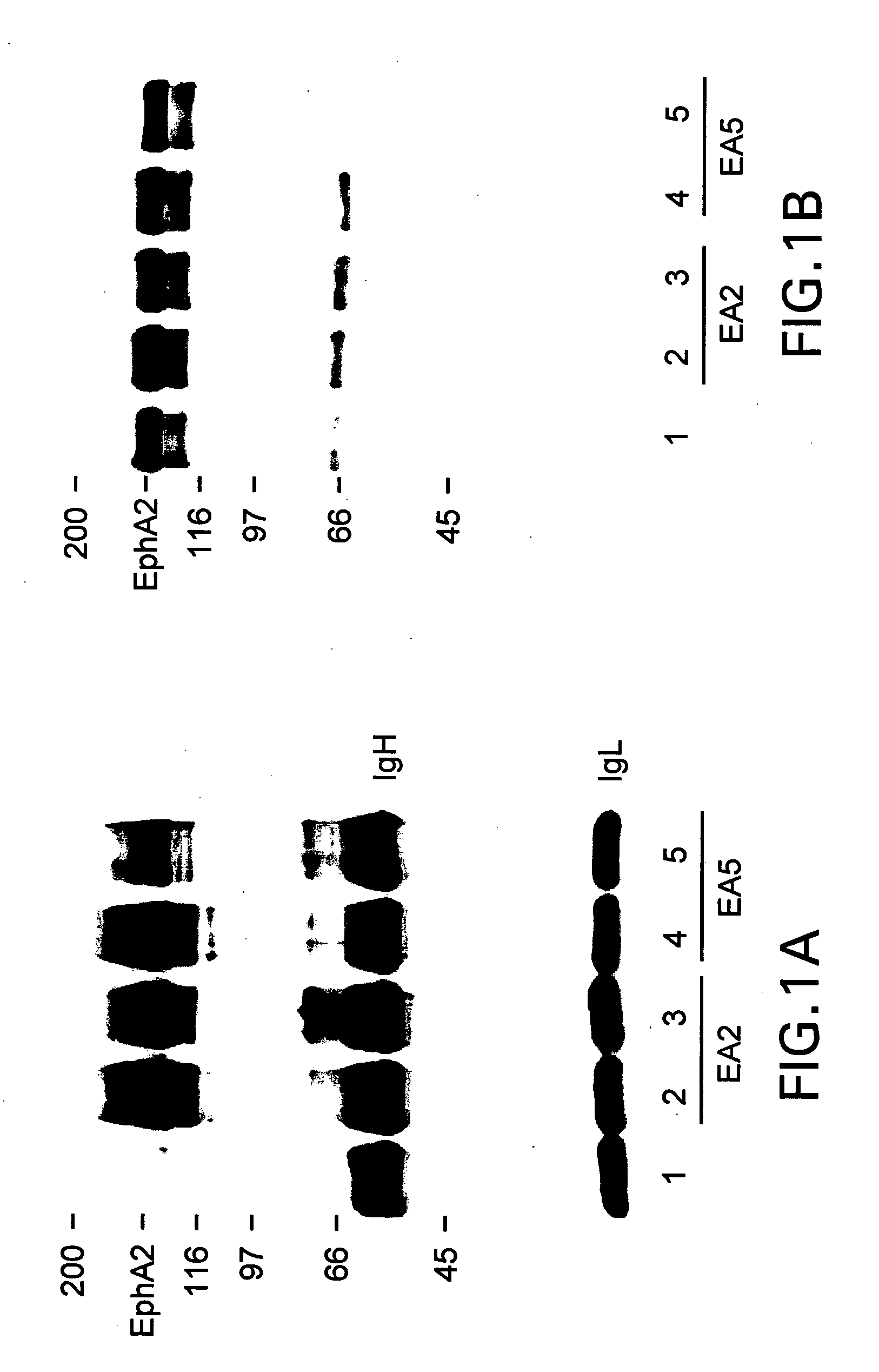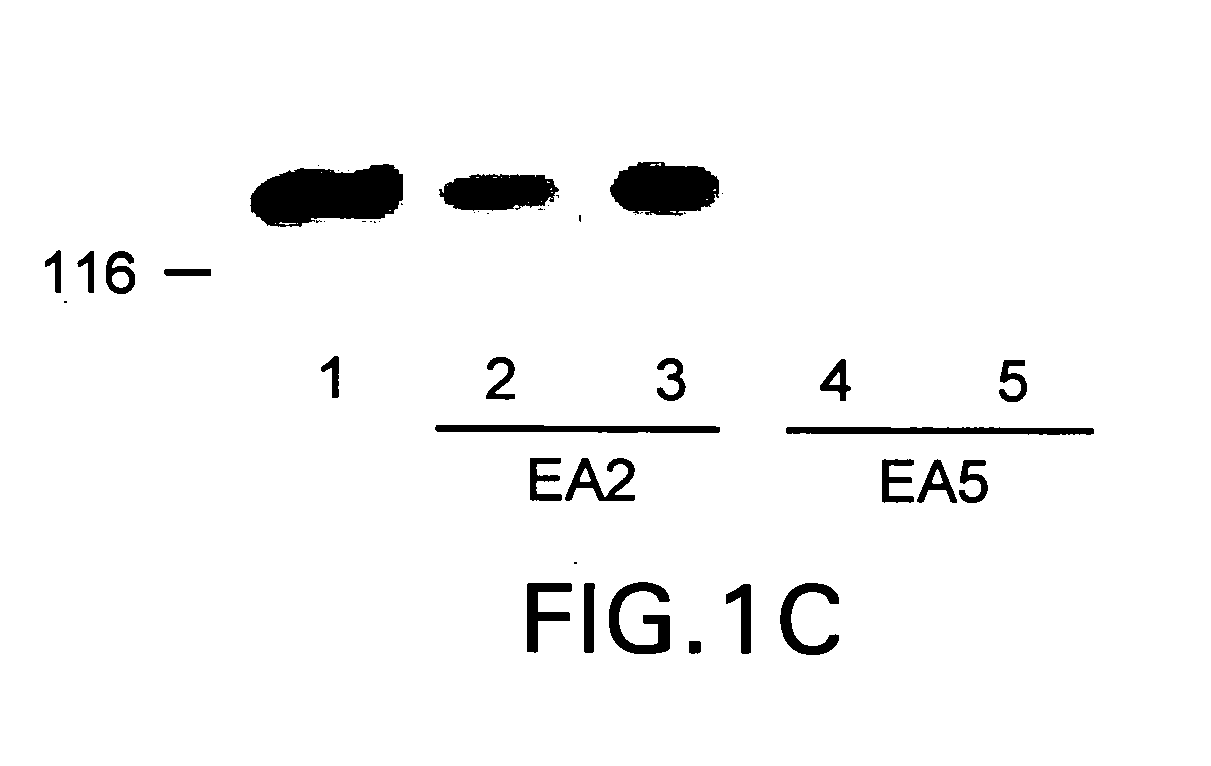EphA2 agonistic monoclonal antibodies and methods of use thereof
- Summary
- Abstract
- Description
- Claims
- Application Information
AI Technical Summary
Benefits of technology
Problems solved by technology
Method used
Image
Examples
Embodiment Construction
[0070] The present invention is based, in part, on the inventors' discovery that EphA2 monoclonal antibodies can inhibit cancer cell phenotypes. Decreased EphA2 activity selectively inhibits malignant cancer cell growth. Decreased EphA2 activity can be achieved with EphA2 agonistic monoclonal antibodies. Although not intending to be bound by any mechanism of action, this inhibition of malignant cell growth is achieved by stimulating (i.e., agonizing) EphA2 signaling thereby causing EphA2 phosphorylation which leads to its degradation. Malignant cell growth is decreased due to the decreased EphA2 levels and, therefore, ligand-independent EphA2 signaling.
[0071] Accordingly, the present invention relates to methods and compositions that provide for the treatment, inhibition, and management of cancer, particularly metastatic cancer. A particular aspect of the invention relates to methods and compositions containing compounds that inhibit cancer cell proliferation and invasion, particula...
PUM
| Property | Measurement | Unit |
|---|---|---|
| Fraction | aaaaa | aaaaa |
| Fraction | aaaaa | aaaaa |
| Fraction | aaaaa | aaaaa |
Abstract
Description
Claims
Application Information
 Login to View More
Login to View More - R&D
- Intellectual Property
- Life Sciences
- Materials
- Tech Scout
- Unparalleled Data Quality
- Higher Quality Content
- 60% Fewer Hallucinations
Browse by: Latest US Patents, China's latest patents, Technical Efficacy Thesaurus, Application Domain, Technology Topic, Popular Technical Reports.
© 2025 PatSnap. All rights reserved.Legal|Privacy policy|Modern Slavery Act Transparency Statement|Sitemap|About US| Contact US: help@patsnap.com



